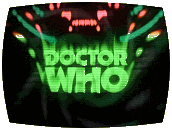 Dr. Liz Shaw is uprooted from her research at Cambridge to serve as the scientific advisor for the recently formed United Nations Intelligence Taskforce, headed by Brigadier Lethbridge-Stewart. The Brigadier seeks Liz’s help in the investigation of two mysteriously precise meteor showers which could be signs of alien interference with Earth. But the Brigadier’s luck improves with the arrival of a police box in the midst of the most recent meteor shower, though its sole occupant is a man he’s never seen before. The Doctor, however, does recognize the Brigadier despite recovering from the trauma of his forced regeneration at the hands of the Time Lords, and the two join forces – with a somewhat bewildered Dr. Shaw in tow – to fight an alien menace which can inhabit and control one of the most common substances manufactured on Earth…plastic.
Dr. Liz Shaw is uprooted from her research at Cambridge to serve as the scientific advisor for the recently formed United Nations Intelligence Taskforce, headed by Brigadier Lethbridge-Stewart. The Brigadier seeks Liz’s help in the investigation of two mysteriously precise meteor showers which could be signs of alien interference with Earth. But the Brigadier’s luck improves with the arrival of a police box in the midst of the most recent meteor shower, though its sole occupant is a man he’s never seen before. The Doctor, however, does recognize the Brigadier despite recovering from the trauma of his forced regeneration at the hands of the Time Lords, and the two join forces – with a somewhat bewildered Dr. Shaw in tow – to fight an alien menace which can inhabit and control one of the most common substances manufactured on Earth…plastic.
written by Robert Holmes
directed by Derek Martinus
music by Dudley SimpsonGuest Cast: Hugh Burden (Channing), Neil Wilson (Seeley), John Breslin (Captain Munro), Antony Webb (Dr. Henderson), Helen Dorward (Nurse), Talfryn Thomas (Mullins), George Lee (Corporal Forbes), Iain Smith, Tessa Shaw, Ellis Jones (UNIT personnel), Allan Mitchell (Wagstaffe), Prentis Hancock (Reporter), Derek Smee (Ransome), John Woodnutt (Hibbert), Betty Bowden (Meg Seeley), Hamilton Dyce (Scobie), Henry McCarthy (Dr. Beavis), Clifford Cox (Soldier), Edmund Bailey (Waxworks Attendant)
Broadcast from January 3 through 24, 1970
LogBook entry & review by Earl Green
Jon Pertwee’s first adventure as the Doctor, as well as the first Doctor Who story shot in color (not counting the two barely-related Dalek movies starring Peter Cushing in the 1960s), gleans a lot of its atmosphere from being shot entirely on film thanks to a lack of BBC studio facilities in 1969. Hugh Burden is really creepy as the seemingly human head villain, especially in some scenes where the camera is sitting right on top of his nose as he telepathically orders the plastic Autons around.
If you find the scenes of physicians puzzling over the Doctor’s curious x-rays to be a little bit familiar, it’s no coincidence – so effective was this introduction to the Doctor, that the character was worked into the story in 1996’s TV movie in much the same way, right down to the x-ray showing the Doctor’s two hearts. This also makes for a wonderfully strong introduction for Brigadier Lethbridge-Stewart and Liz Shaw, who are the only characters the audience really is sure of until the Doctor gets to his feet two episodes into the story. There’s also a vaguely sinister air about U.N.I.T. in the early scenes where it appears that Liz is being coerced into working for the Brigadier, and later when one of U.N.I.T.’s soldiers grills local poacher Seeley for the whereabouts of one of the artificial meteors. This hint of skullduggery helps to lend Pertwee’s first year as the Doctor a very X-Files-ish feel, though at the time of its first broadcast, the seventh season worried some fan purists who felt that the Doctor, a quintessential anti-establishment figure, wouldn’t stand to work for what is basically a paramilitary government organization.
Little things to look for: Jon Pertwee, in this show, bares more of the Doctor than either of his predecessors or any of his successors in the infamous “singing in the shower” scene, though one wonders where the recently-regenerated Time Lord got a tattoo on his right forearm (!). The intense Dudley Simpson musical score is very good, though it gets rather wacky in the scene where the Doctor appropriates a car from one of the hospital doctors and drives it to U.N.I.T. – the music doesn’t change in and of itself, but it sounds like someone was gradually speeding up the tape on which it was recorded.
And just remember, plastics make it possible!

